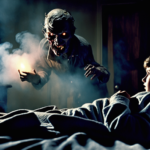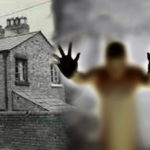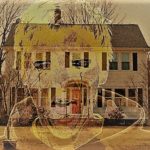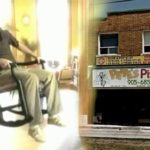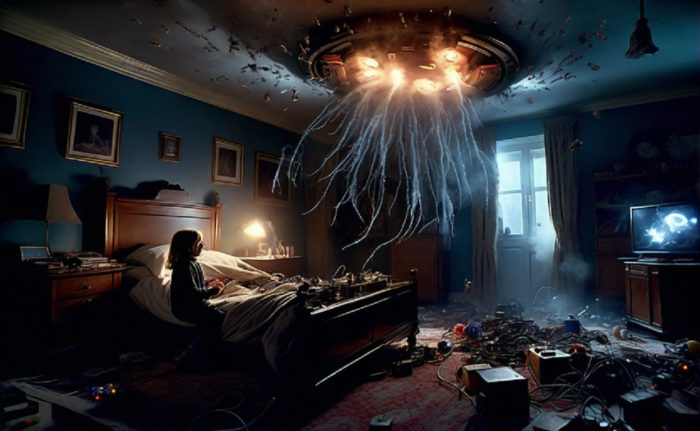
A Haunting Manifested By The Subconscious Mind?
- By
- November 9, 2023
- October 29, 2023
- 16 min read
- Posted in
- Supernatural, Ghosts & Hauntings
Although it is perhaps not very well known outside of paranormal circles, the Andover Poltergeist case is one of the most intriguing and credible of such encounters on record, not least as much of the investigation occurred while the activity was at its height. Perhaps because of this, the incidents are some of the most detailed on record and were witnessed by multiple people on a regular basis.
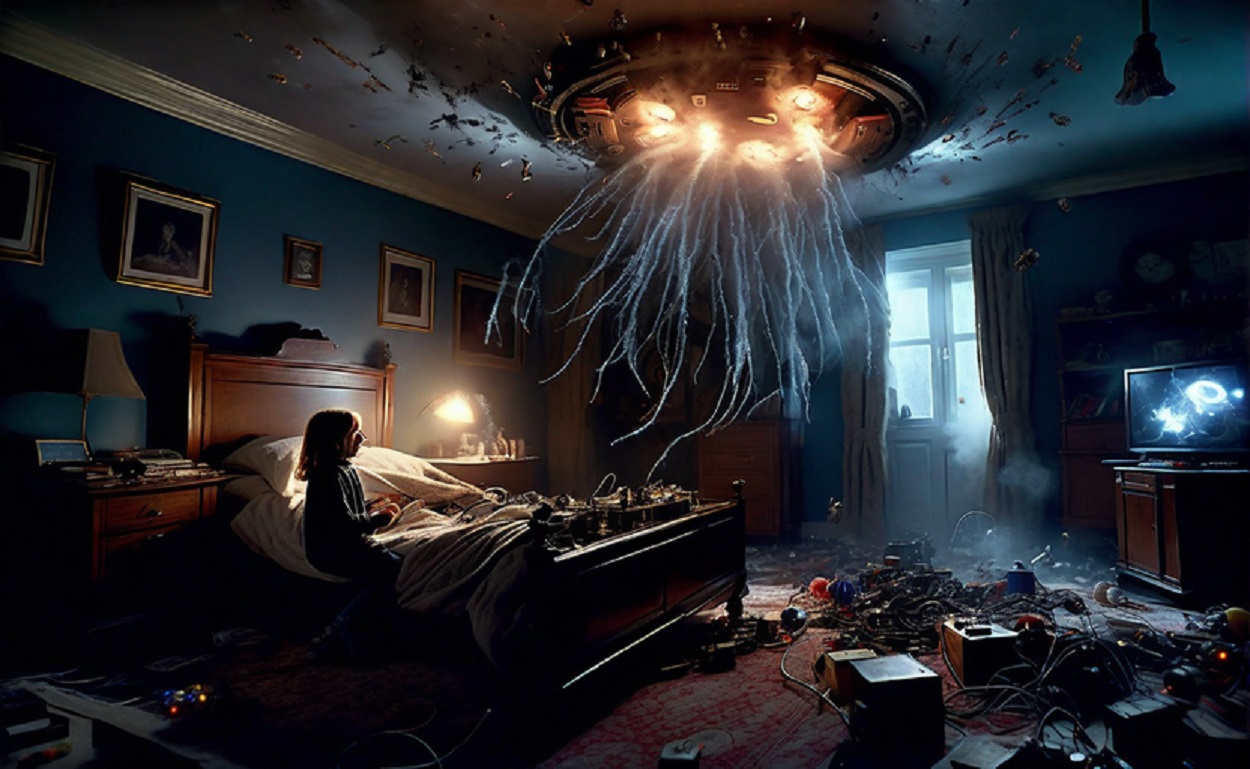
Indeed, the poltergeist encounters in Andover, Hampshire is one of a group of such cases that has enabled researchers into such matters to notice connection and repeated details to each other, as well as zeroing in on one of the most intriguing and important factors of poltergeist activity – loud knocks, often used by the apparent entity behind them to communicate, and the scientific findings that might shed light on this complex and curious phenomena.
Paranormal investigator, Barrie Colvin investigated the case over the course of nine separate visits to the house and interviews with the family between late April and mid-June of 1974. Initially, the family wished the account and the subsequent report to remain out of the wider public arena. However, over three decades later, with all of those involved now having moved from the area and with alternative names provided for all of those involved, the account was made available in the later 2000s. It is from his investigation that the following account is based.
Contents
- 1 A Sudden Start To Strange Events During Easter Weekend 1974
- 2 Developing A Complex Communication System With “Eric”
- 3 A Sudden Increase In Intensity Of Activity
- 4 Events That Are “Likely To Be Due To An Unknown Energy!”
- 5 “Eric, Are You There?” – Tests And Experiments
- 6 Knocks Elsewhere Around The Room
- 7 A Drastic Increase In Intensity
- 8 The Numbered Cards Experiment
- 9 Attempts To Photograph Eric
- 10 A Credible Case With Credible Witnesses
- 11 No Evidence “Eric Waters” Ever Existed!
- 12 Just What Is At The Heart Of Poltergeist Cases?
- 13 The Untapped Power Of The Mind?
A Sudden Start To Strange Events During Easter Weekend 1974
The strange events in question began completely out of the blue in April 1974 after the eight members of the Andrews family had lived in the council house in Andover, Hampshire in England for five years without incident. [1] Furthermore, the house itself was only a little over a decade old, having been built by the local council to deal with the many residents working in London requiring housing nearby in the early 1960s, and so did not have a long and storied history.
Mr. and Mrs. Andrews lived in the property with their six children – their daughters, Maria and Theresa aged 20 and 12 respectively, and their four sons, 19-year-old Kevin, 17-year-old Gary, 15-year-old Steven, and their youngest, Mark, who was ten. When Colvin first met with the family on 28th April, the strange incidents had been happening for over two weeks, and all members of the family had witnessed them.
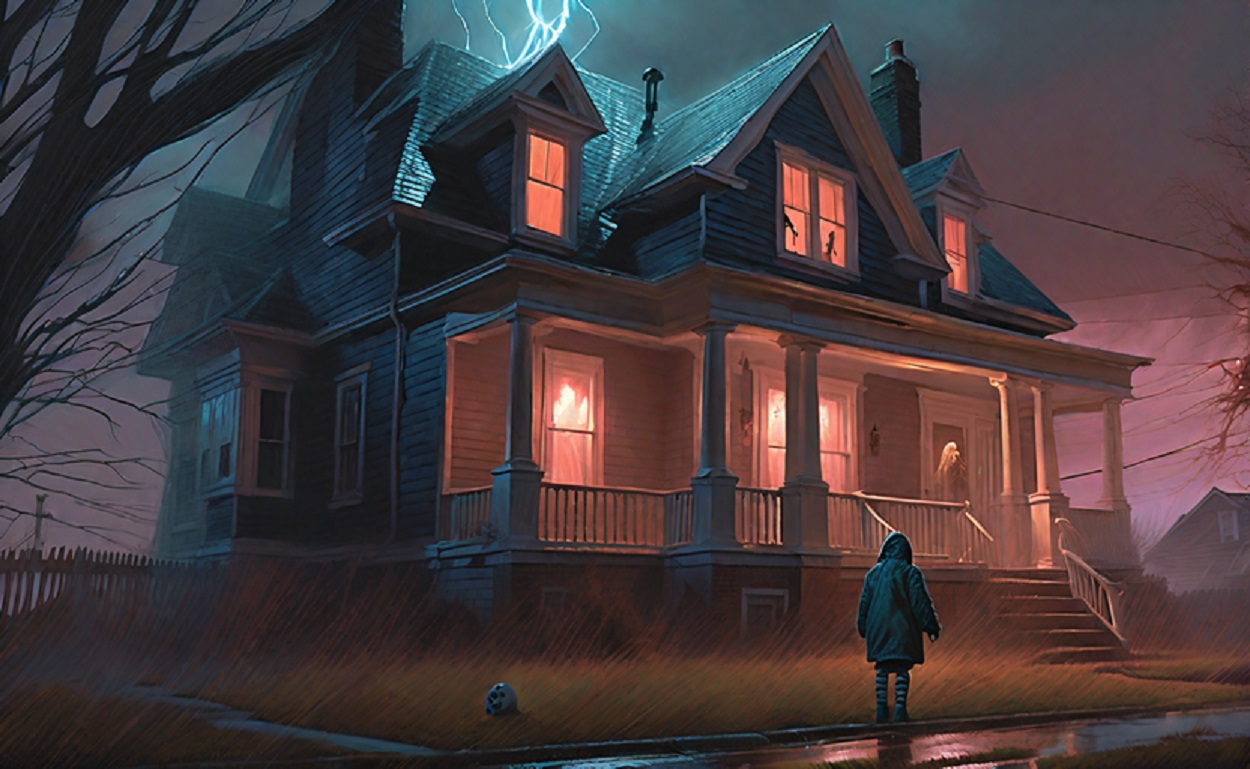
According to that first meeting, Theresa and Maria were the first to notice strange tapping sounds as they lay in bed on Good Friday (12th April). To begin with, as the sounds were coming from the wall that adjoined the room next door, they believed the person next door was making them. However, when Theresa began to ask questions (using one knock for yes, two for no type of method) to whoever was making the tapping noises – speaking so quietly that Maria could hardly hear her, never mind the apparent person on the other side of the wall – she received answers that were correct.
These events continued on a nightly basis, with the two girls keeping them to themselves, positively entertained by this mystery communication. Eventually, however, they informed the rest of the family of the mysterious knocks that would answer their questions. Not only would the rest of the Andrews family hear them for themselves, they would ask questions of the curious presence also. And by this time, the communication had advanced somewhat.
Developing A Complex Communication System With “Eric”
Whereas the questions were limited to yes-no questions (with three knocks being made to indicate the presence didn’t know the answer), the family soon developed a more intricate method that allowed for more complicated questions. Ultimately, the entity would knock so many times to indicate a letter in the alphabet (one knock for A, two knocks for B, three knocks for C, and so on) and essentially spell out its answer.
Although these communications were still of an entertaining nature – such questions as who would win an upcoming football match, for example – the fact that there was no explanation for the apparent intelligent knocks was quite unsettling for Mr. and Mrs. Andrews. Perhaps because of this, they began to notice other details also. One of these details was the fact that whenever Theresa was not sat or laid on the bed, rarely would any answers or knocks be forthcoming.
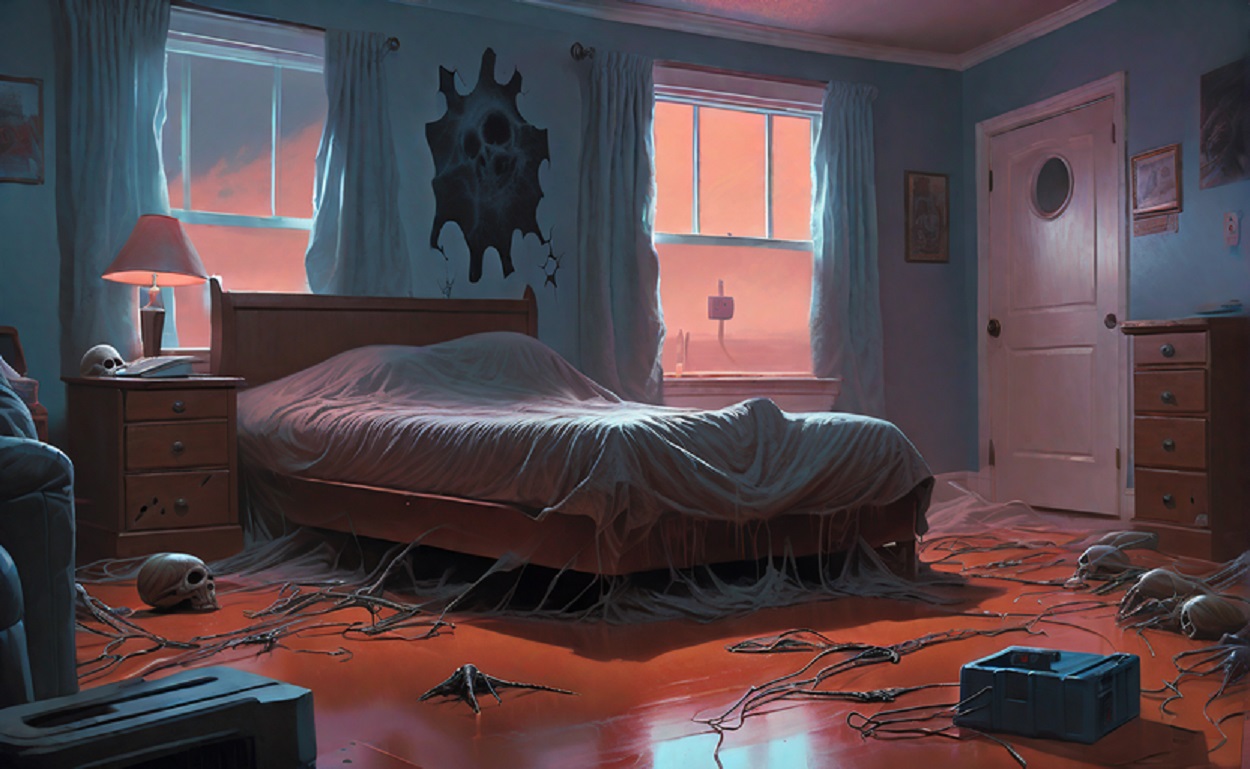
Theresa and Maria, though, would continue their regular communication with the mysterious presence behind the tapping sounds. They would discover that his name – at least according to the reply – was Eric Waters. As well as answering questions about his identity, Eric would often give Mr. Andrews tips for horse racing, and correctly predicted that Liverpool would win the FA Cup and that Leeds United would win the league.
It was during this time that the family also turned to several people in an attempt to find an explanation for the knocking including the police, the local priest, and a medium from a local spiritualist church. In fact, it was the medium’s revelations that were of the most concern to Mr. and Mrs. Andrews. She claimed that Eric was the spirit of a boy who was buried under the floorboards of the house. And what’s more, he wished to “take over the personality of Theresa”.
Indeed, as the days and weeks went on, things would become decisively more ominous.
A Sudden Increase In Intensity Of Activity
At around 8:15 pm the following evening on 29th April, Colvin received a telephone call from Mr. Andrews. He could tell before he was told how Eric had kept the family up all night that the man appeared particularly stressed. And this time, rather than being friendly taps, these knocking sounds had suddenly become decidedly louder. At one point, the family had attempted to reason with Eric to cease the knocking for the night, but to no avail. As Mr. Andrews explained to Colvin, he and his wife were of the opinion that Eric was suddenly “purposely attempting to frighten them”.
Colvin arrived back at the Andrews’ home the following afternoon. And as he suspected would be the case, both of the parents appeared particularly tired and concerned. They explained the events of the previous evening, and, given that this increase in activity had begun when Theresa had turned in for the night, it was agreed that Colvin would return later that evening, at around 8:30 pm when Theresa would about to go to bed.
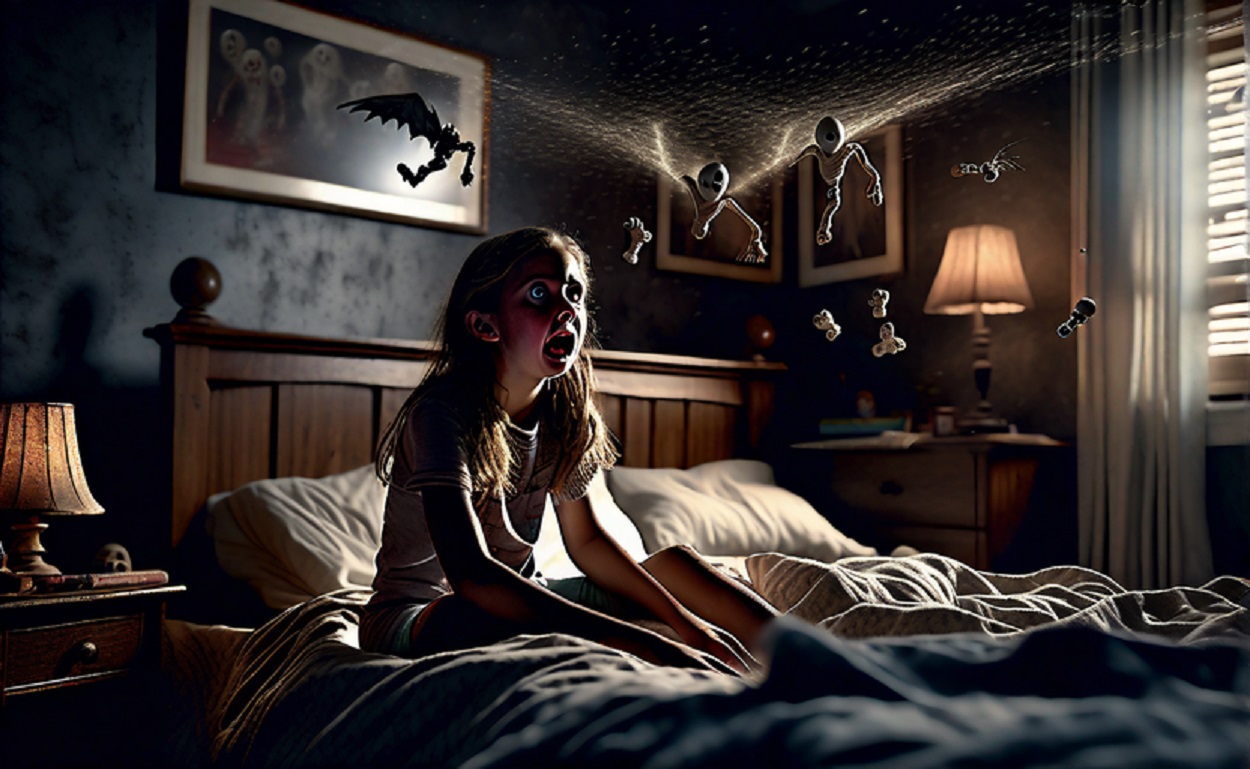
When he arrived, he noticed the mood in the house to be anxious and uneasy. For around an hour he sat with the parents, the sound of Theresa and Maria attempting to make contact with Eric coming from upstairs. Then, the typical gentle knocking sounds of previous weeks could be heard. Eventually, Mr. Andrews went up to the girls’ room and began asking questions of Eric. Despite a “single loud bang”, most of the tapping was of the entertaining nature of previous nights.
After a short time, Mr. Andrews came to speak with Colvin. He stated that they had noticed that whenever a new person entered the room, the tapping would often stop. He suggested to the investigator that he make his way slowly and quietly up the stairs, and then stand outside the room to witness the events from there. He did as requested, stopping at the top of the stairs near the doorway to the girls’ bedroom.
From here, he could not hear the questions and the responding tapping sounds, but he could also see that no one in the room was making them. He slowly made his way closer to the doorway, stopping right outside. When Mr. Andrews noticed him, he asked out loud to Eric if it would be “all right for Barrie to come into the room”.
The response was clear – a single loud bang. Yes.
Events That Are “Likely To Be Due To An Unknown Energy!”
After having received permission, the investigator stepped into the bedroom and made his way to the headboard of Theresa’s bed. From here, he could tell that the knocking sounds appeared to be coming from the middle of the wall that was directly opposite the girls’ beds. He also noted that when answering questions – particularly the more complex questions when Eric would use numbers to mark out the letters of the alphabet – the last knock was distinctly louder, “which indicated it was indeed the last knock”. At one point while Eric was answering a question, Colvin leaned over and placed his hands on the wall. To his amazement, he could feel the vibrations coming from it in sympathy with each knock.
After a further 15 minutes, Mrs. Andrews suggested that they bring the communication to an end for the evening, bidding Eric goodnight. In response was a “very soft but definite single rap”. The adults then went downstairs at which point Mr. Andrews asked bluntly what Colvin thought was going on.
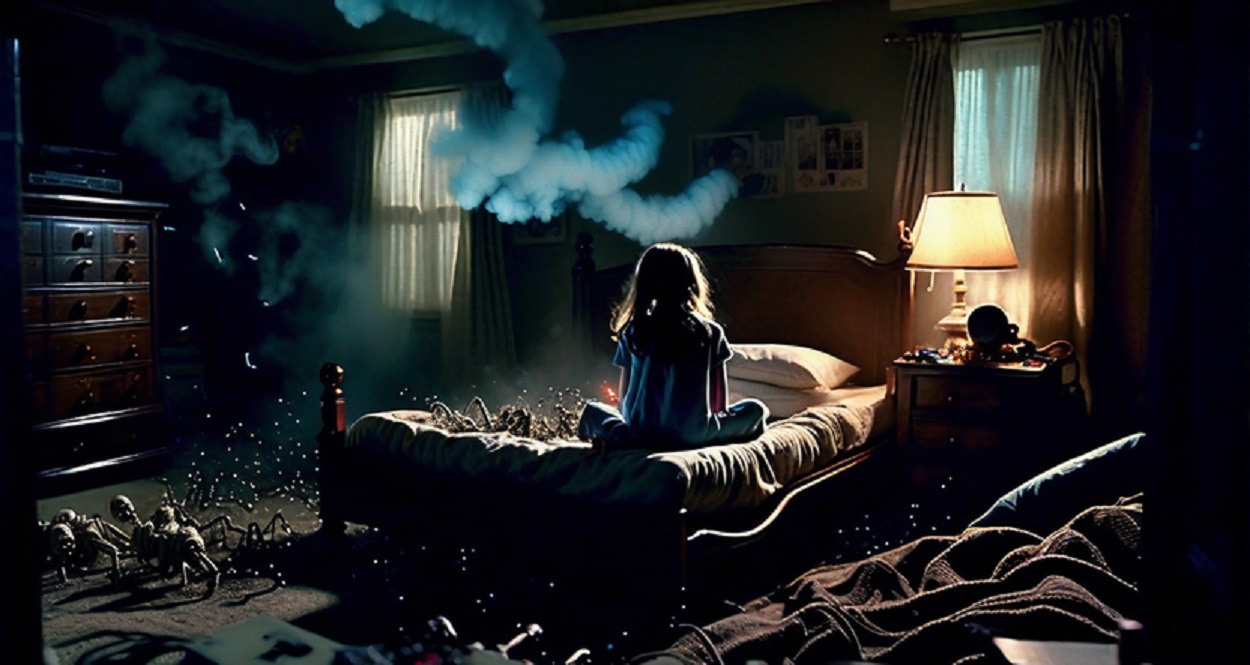
Colvin began to speak to the pair about poltergeist activity, and specifically that he didn’t believe the entity behind the knocks was a boy called Eric but rather “likely to be due to an unknown energy” that was likely “associated with the particular psychological dynamics present in the house”.
Although the Andrews’ knowledge of poltergeist encounters was understandably limited, they were eager to listen to Colvin, including his desire to “move the rapping sounds away from the wall” and to somewhere else in the room, possibly elsewhere in the house. This way, he offered, ensure that the knocks were not somehow the result of someone perpetrating a hoax from next door, as had happened in other previous cases.
When Colvin left later that evening, they agreed to meet again very soon and to carry out their plans in an attempt to get to the bottom of these mysterious events.
“Eric, Are You There?” – Tests And Experiments
Colvin returned to the Andrews’ home two days later on the afternoon of May 2nd and began explaining his plans to take the investigation forward, including attempts to move the tapping away from the wall that was connected to the property next door.
Colvin had also noted several more details, one of which was that the replies appeared to be clearer to questions asked by Mrs. Andrews. Because of this, Colvin suggested that she should be the one to attempt to communicate with Eric during these tests, and perhaps the most crucial of those questions, was for Eric to communicate with her in another part of the room.
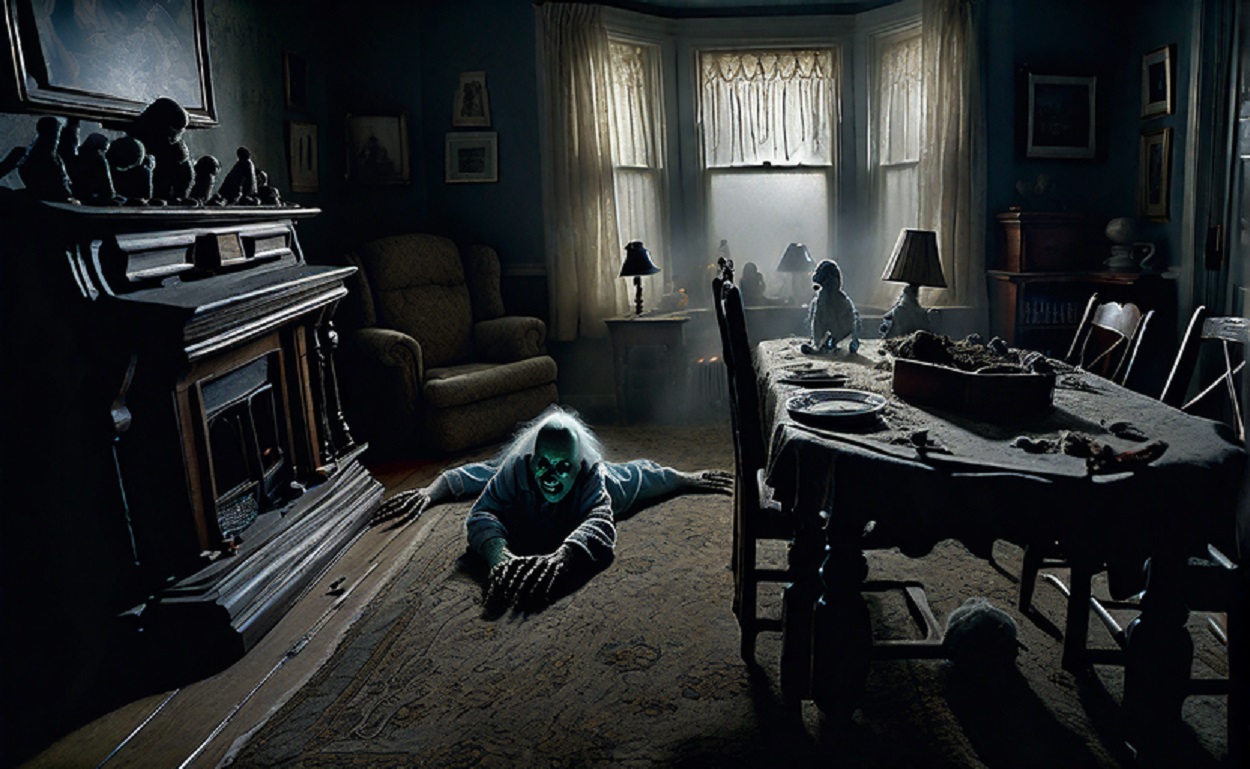
Upon setting up in the bedroom, it was decided that they would ask Eric to tap his responses on the headboard of Theresa’s bed. Before the questioning began, Theresa positioned herself on the bed, a short distance away from the headboard. After several moments, during which time everyone became completely silent and still, Mrs. Andrews called out, “Eric, Are You There?”
Everyone in the room waited for a response. After several seconds, although it wasn’t a knock, a strange but very purposeful scratching sound came from the wall just above Theresa’s headboard. This scratching noise was steady and lasted around 10 seconds. Mrs. Andrews then asked the question again. This time, however, no response came.
The group waited quietly for around 20 minutes before Theresa offered that Eric was no longer there. As soon as the words left her lips, however, a response came.
Knocks Elsewhere Around The Room
Just as Theresa had suggested they should try again later, a “loud double knock” sounded out from the wall. After a moment, Mrs. Andrews once more asked if Eric was there. Once more, a clear knock replied, and what’s more, it came from the same wall. Several questions followed, all of which were answered with the typical knock. Then, Mrs. Andrews asked Eric if he would knock on the headboard. He replied he would. She asked again, and a faint tap came from the headboard.
Colvin placed his hand on the headboard as Mrs. Andrews asked once more if Eric would knock on it. He did so, louder this time, and the investigator could clearly feel the vibration from it. This was repeated several times, each knock getting steadily louder.
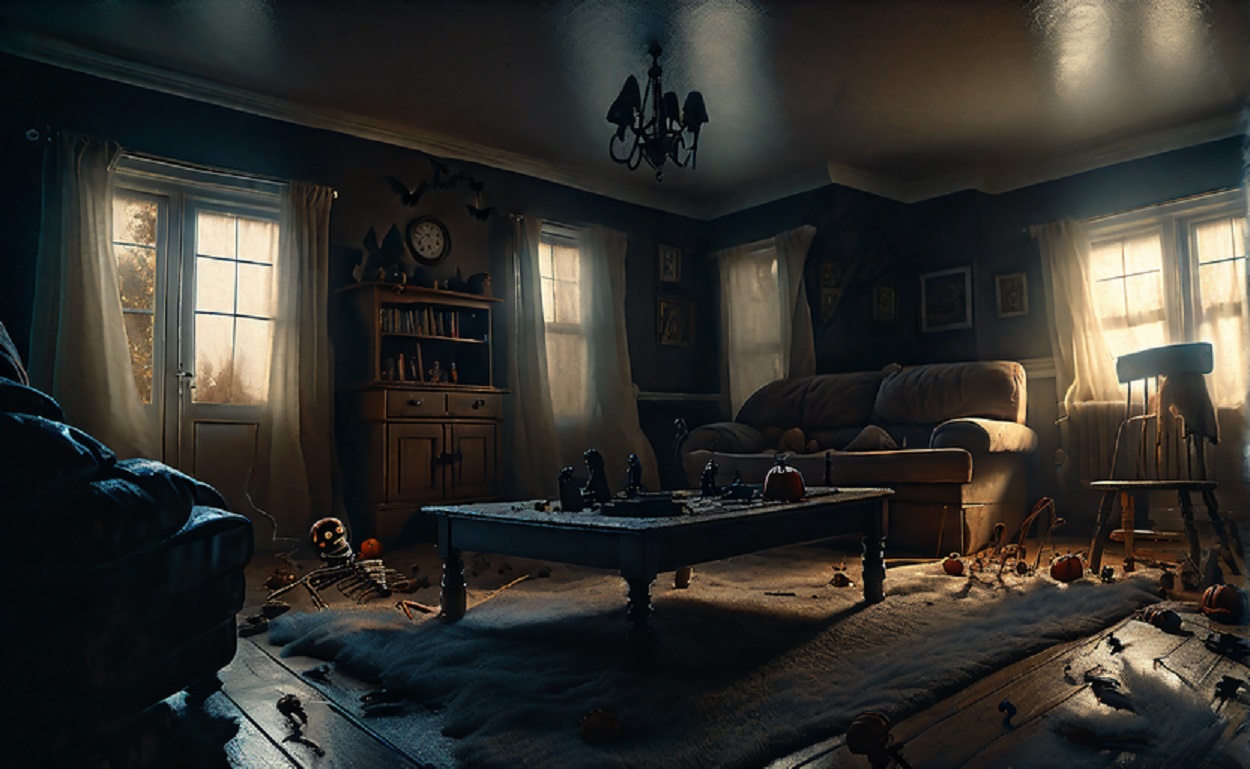
After clearly having achieved their aim of having knocked on something other than the wall opposite the bed, it was decided to ask him to knock somewhere different again. To their amazement, this was achieved as Mrs. Andrews asked Eric to knock on the metal part of the bed frame, which he duly did. As soon as Colvin heard it he made note that the sound was distinctly different than those from the wall and the headboard, with these being much higher in pitch.
They continued with these initial experiments for around 20 minutes before they noticed that the sound of the knocks was becoming gradually softer, almost as if Eric was somehow running out of energy. Perhaps coincidentally or not, Mrs. Andrews mentioned Theresa also looked tired, as she had done for around a week having not gotten much sleep during that time.
Following the experiments, Colvin was increasingly satisfied that he was dealing with a genuine poltergeist case. He left the Andrews with a view to going through his notes and clearing his mind. Three days later, however, he would be back.
A Drastic Increase In Intensity
On the evening of 4th May, Mr. Andrews contacted Colvin once more. He informed the investigator of a particularly intense session with Eric, one where he appeared to become quickly angry and frustrated. This apparent frustration was demonstrated in a dramatic increase in the loudness and intensity of the knocks, which were so loud at points that neighbors and passers-by stopped outside the house to witness the bizarre events.
Colvin arrived at the house first thing the next day and Mrs. Andrews relayed the content of the recent communication sessions with Eric. According to him, his skeletal remains were under the house, and what’s more, he wished someone to dig them out so they could receive a proper burial.
Then things took an even stranger turn when Kevin attempted to communicate with Eric directly. As soon as he began asking questions the knocking stopped immediately. He tried several more questions, all of which went unanswered. Then, using a touch of reverse psychology, Kevin declared that he didn’t believe Eric “ever really existed!” To this, Eric responded immediately with a “single, very loud bang”. Kevin continued to taunt Eric, claiming that he thought that Eric was never a real person. Once more, a single, loud bang was heard. Kevin went further, stating that he thought Eric was a liar. There was a moment’s silence before several loud bangs, one after the other were heard, as if Eric was now agitated and angry.
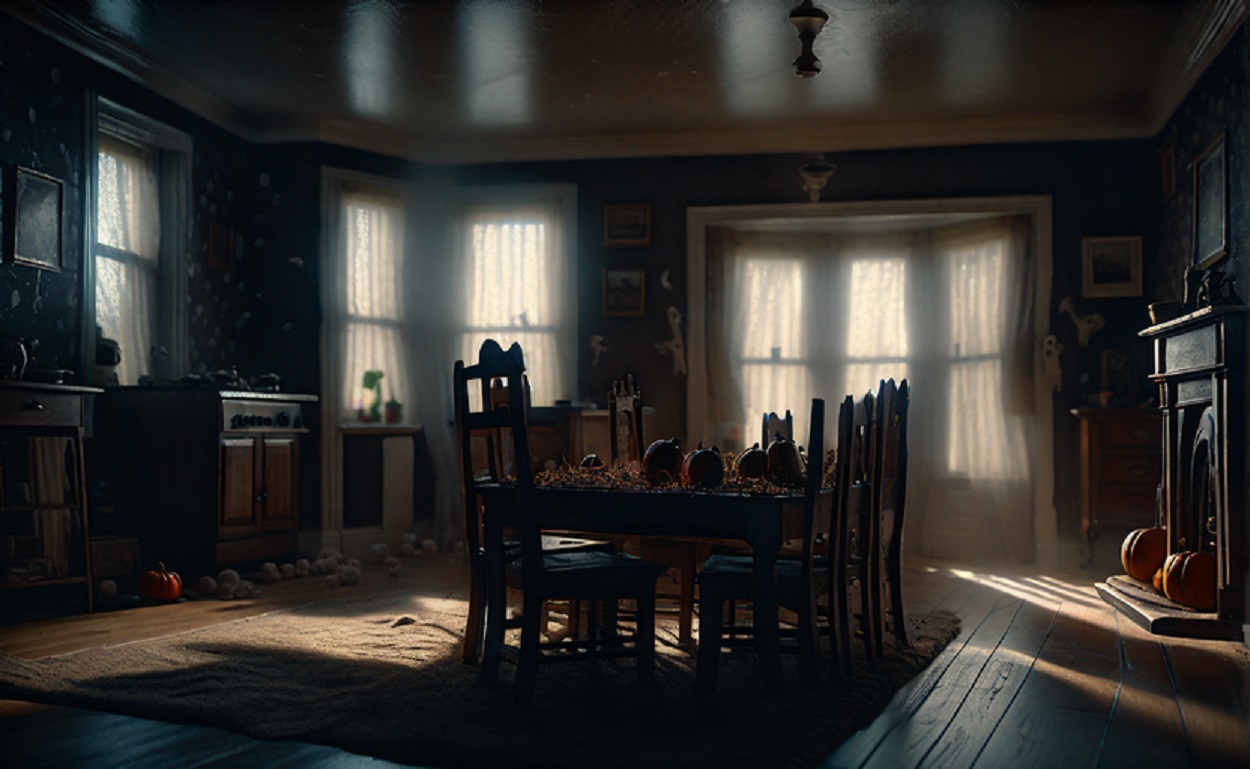
The series of quick, sharp, loud knocks began again for several seconds before another brief pause. This continued for around an hour, unprompted and largely unresponsive. This stopped for around an hour but then began again, and continued until the early hours, although throughout this series of agitation by Eric, he would answer questions that the family put to him. Eventually, as the sun came up, the sounds stopped. The family, though, were mentally and physically exhausted.
After relaying these recent events to the investigator, Mrs. Andrews asked Colvin if he could contact someone who would be able to “remove” Eric from the property.
While Colvin was talking to the family, he could hear Theresa and Kevin attempting to communicate with Eric. Initially, there was no response. However, Kevin once more resorted to taunting Eric, calling him a “bloody great liar”. A moment later, a loud knock was heard. The adults immediately made their way to the bedroom. Kevin continued to taunt Eric causing the presence to unleash several intense knocks. At this, Mrs. Andrews left the room, so unnerved was she at the goings-on.
Colvin, meanwhile, made his way toward the bed, noting that the knocking sounds were coming from the headboard. He again put his hands on it and could feel the vibrations of the knocking sounds.
The Numbered Cards Experiment
Activity continued at the property for several weeks and appeared to be more controlled. Only when Kevin purposely goaded Eric did the intensity increase. The family had also noticed some kind of apparent telepathic communication between Theresa and Eric. Theresa had asked Eric to sound out the number she was thinking of with knocks. Almost every time she asked this, the mysterious presence almost always answered correctly. Upon learning of this Colvin was eager to put this new development to the test.
On the afternoon of 23rd May, Colvin arrived at the Andrews household, ready to proceed with this new experiment with Eric. With him, Colvin had brought 40 cards – four sets of cards numbered 1 to 10. With Theresa positioned on her bed where she usually was for communicating with Eric, Colvin picked out a card at random, and quickly showed it to everyone but not saying the number out loud in the room, before holding it to face the wall. He would then ask Eric what number was on the card. The card, incidentally, was a number 4 – and Eric responded with four sharp knocks.
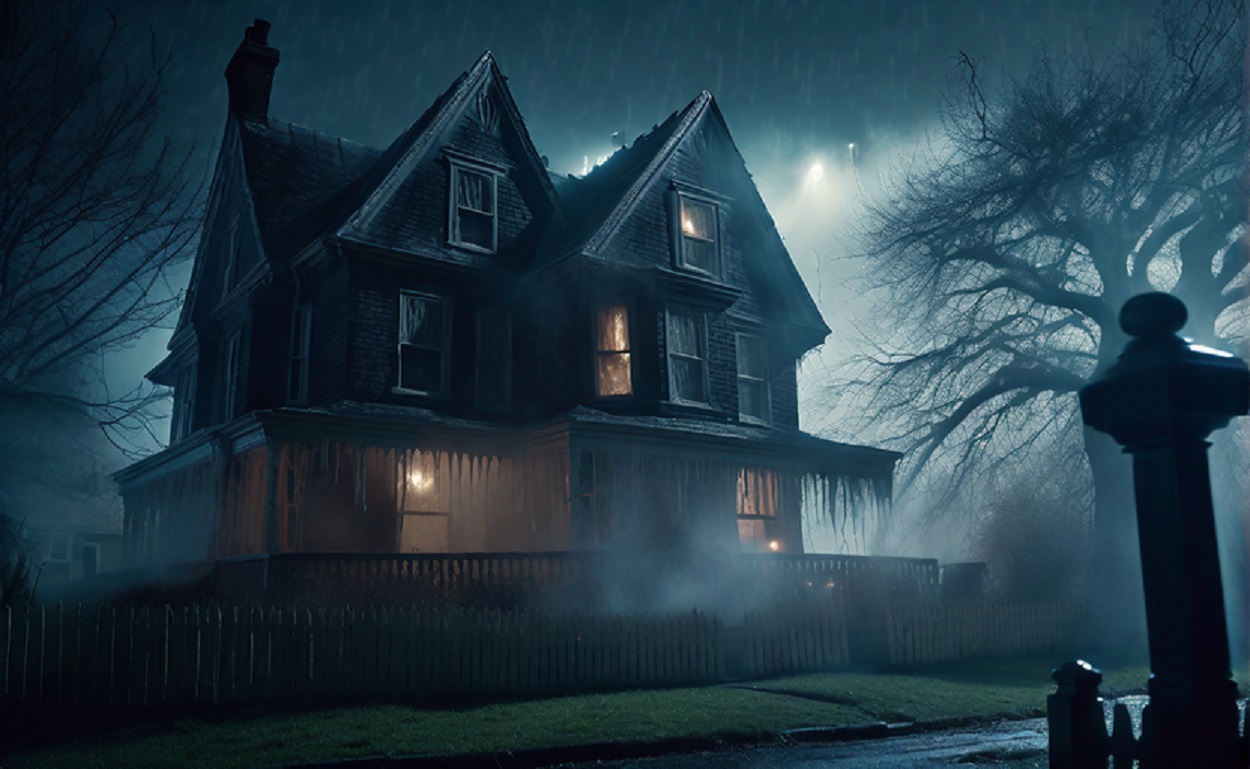
Although Eric answered almost all of these questions correctly, there were four out of 27 that he gave the incorrect number. Regardless, the experiment had been a success, and the high success rate told Colvin that there was no chance whatsoever that a person on the other side of the bedroom wall could be responsible for the knocking sounds.
Following these tests, the family asked various questions of Eric, mainly about himself and his family. And while he answered most of these, there were several where his response of three sharp knocks meant he “didn’t know”. It was perhaps one of the last questions that was most intriguing when Colvin asked if he might capture Eric on camera, to which he replied yes. It was agreed that on the next visit, Colvin would attempt to do just that.
Attempts To Photograph Eric
Colvin returned on 7th June, and with him, he had Dr Reinhart Schiffauer, who was a Senior Scientist at the Egham Research Laboratories, who would aim to capture an image of Eric. They set up the relevant equipment and the family and investigators gathered in the bedroom. Communication soon began, and this conversation was of a mostly friendly nature. One point of interest was that Eric replied no when asked if Theresa had to be in the room while communicating with him.
They then moved on to the photograph attempts, asking Eric such questions as where would be the best place to position the camera in order to capture an image of him. It was while they were attempting to capture these images that Colvin had a clear thought in his mind – he wondered, to himself, if Eric could see what they were doing. Almost immediately, a single knock – for yes – sounded.
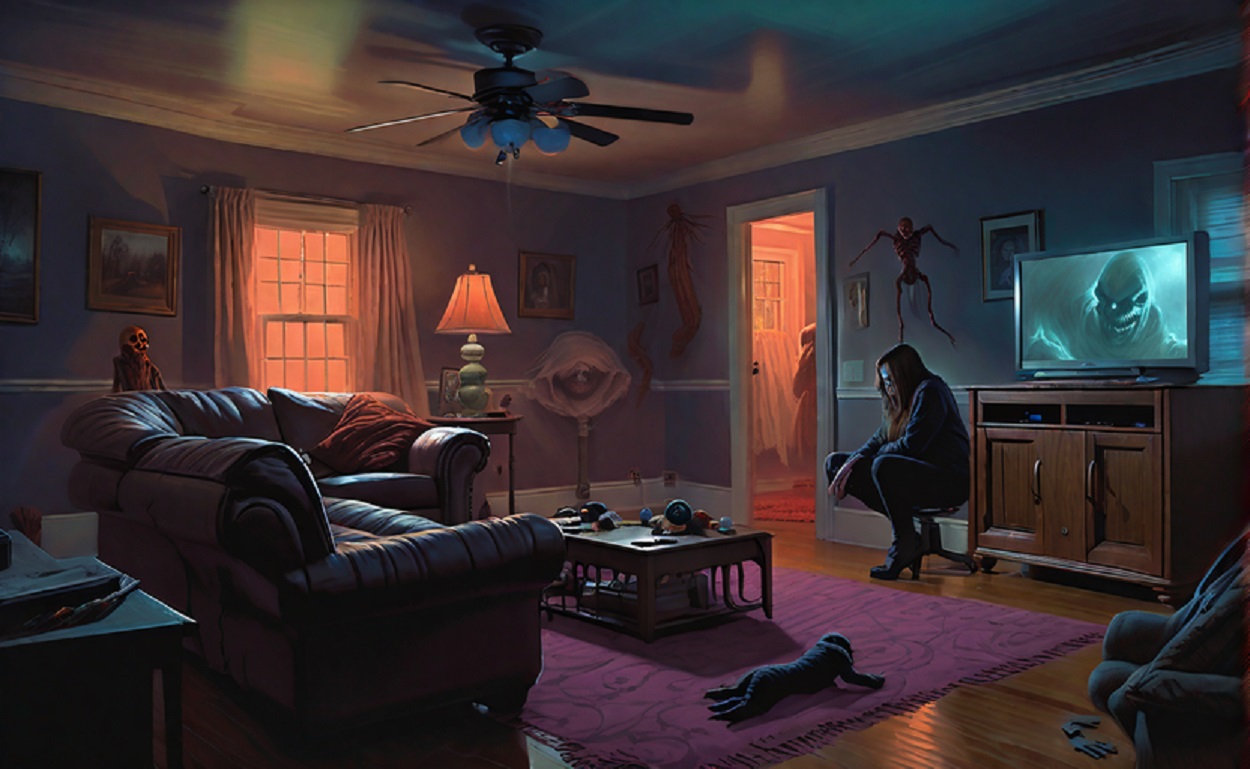
Although Eric appeared to be very corroborative throughout this particular session, indicating that pointing the camera at the wall above the headboard would be the best place for it, none of the photographs showed any kind of figure or presence. They did, however, pick up a full sentence from Eric, seemingly one that was volunteered to them without prompting. It stated:
I am here to rest and stop my bones from rotting.
It was also noted by Colvin during these exchanges, that Eric – as he had with him when he had wondered if he could see him – almost knew what Mrs. Andrews was about to ask, almost as if he could read her mind.
Three days later, on 10th June, Colvin returned for what would be his last visit to the Andrews’ home. By this time, it seemed Eric was becoming less and less responsive, on some occasions not responding at all. By the time he arrived at around 7:30 pm, numerous questions by different members of the family failed to elicit a response.
Then, Theresa stated that “Eric had gone” and that he was “gone forever”. She couldn’t explain why or how she knew, she just sensed it.
A Credible Case With Credible Witnesses
When Colvin first met the family after having read of their experiences in a local newspaper, he noted that the family appeared “reticent in coming forth with details”, possibly due to them “not fully understanding” his reasons for having an interest in the case. This, along with the fact that the family wished the case to remain unpublished following the investigation is perhaps a good indicator of the authenticity and credibility of their claims. If they, even just one member of the family were looking for financial gain or fame from the incident, they surely would have been eager to tell all to Colvin and certainly would have pushed to have his findings published.
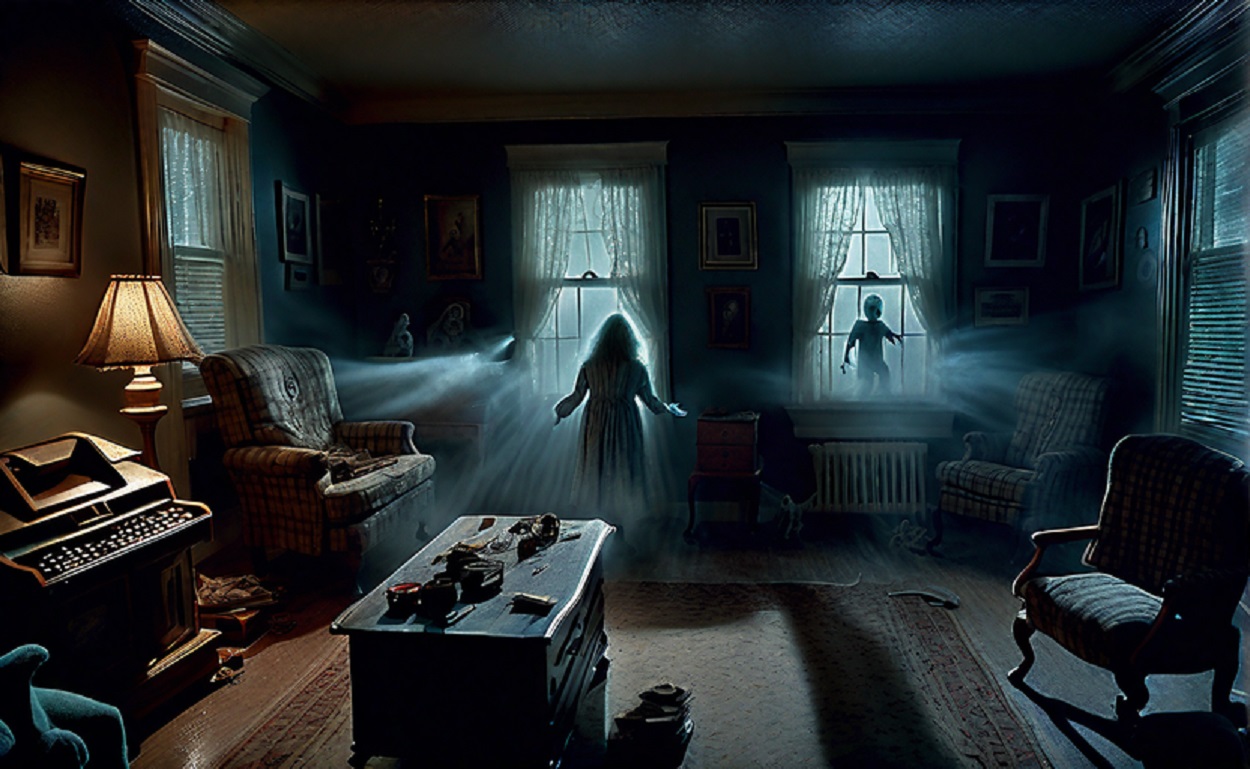
Colvin also noted that “the family was an apparently happy one” and that the incidents, as entertaining as they might have been, to begin with, were not particularly welcome in their ordered and peaceful household.
Following the encounters and with Eric’s apparent disappearance, he was more than certain that they had been genuine in the activity and had not been behind it anyway. When asked if they believed that Eric was a person whose remains had been buried under the property, generally speaking, they believed that he was and that his remains would likely be discovered during the course of time.
For his part, Colvin offered that there were likely no remains under the Andrews’ house, but that Eric, while not being a “ghost” or even a person who once existed, was more likely a strange and unknown manifestation of energy.
No Evidence “Eric Waters” Ever Existed!
In the aftermath of the Andover incident, Colvin did make attempts to find an Eric Waters who might have connections to the area, including consulting with a local historian. And while Waters was a particularly common name in the area, there were no records of an Eric Waters going as far back as the late seventeenth century.
One particularly interesting discovery came while speaking to the former owner of the land, Mr. Smallbones. He stated that from the end of the Second World War to 1960, the land was used as a caravan site and ultimately attracted many from the traveling community. If an Eric Waters was part of this community, it could explain why there are no official records. However, there is no evidence that anything untoward took place on the land while it operated as a caravan site.
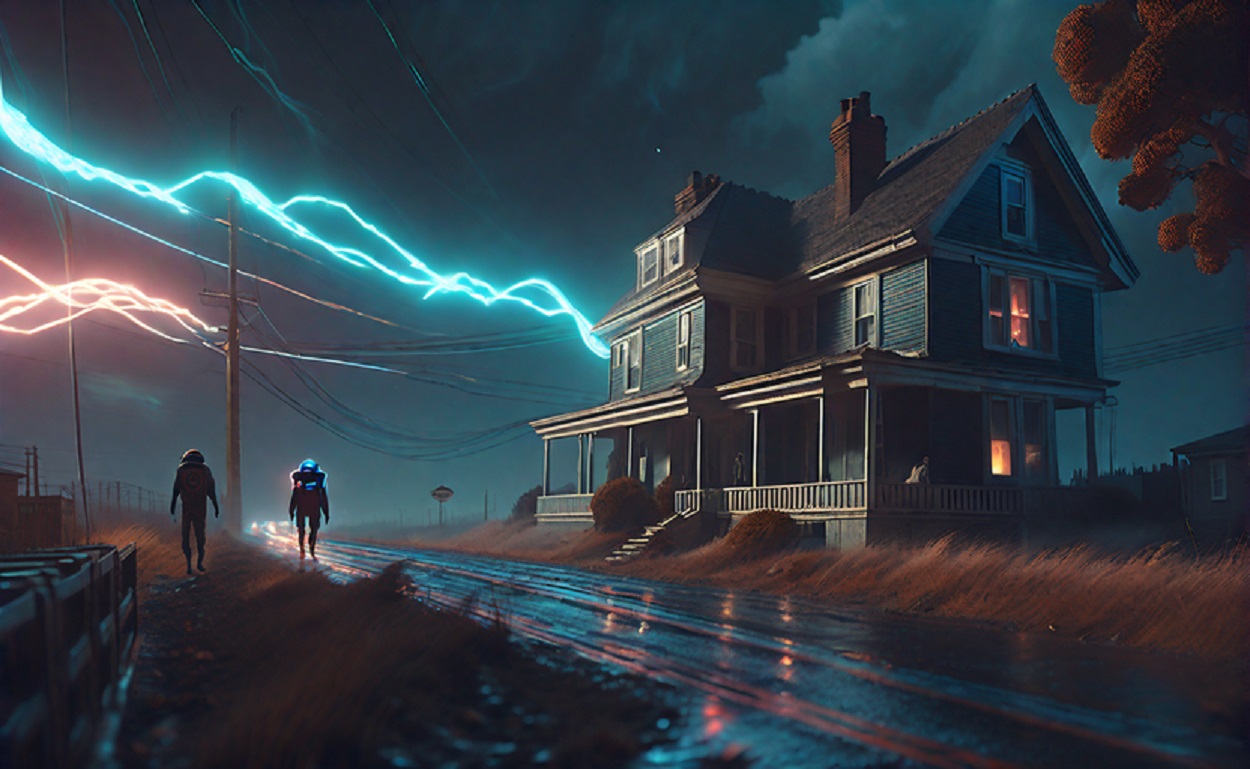
Another intriguing, if macabre discovery was that of a murder that took place around 1890 at Drunken Tree Drove, which is in relative close proximity to where the Andrews property took place. Seemingly, the victim was hanged from a tree, although there was no record of his name in any of the reports. We might also assume, given that we know the person was hanged, that the remains would have been buried in a graveyard and not on a patch of land out of the way somewhere. In short, although the murder very much happened, it is almost certain the victim was not Eric Waters.
There were, though, two further possibilities that, while unlikely, could not be ruled out. According to the Register of Births and Deaths for the local area (from the year 1837), two children were registered to parents called Waters – Mr. and Mrs. A Waters in 1878, and Mr. and Mrs. S. Waters in 1897. The children’s first names, however, were not recorded. While it is certainly possible that one of these Waters children might be the Eric Waters who communicated with the Andrews family, it is, statistically, at least, unlikely. That was the conclusion of Colvin also.
Just What Is At The Heart Of Poltergeist Cases?
As with other cases, the poltergeist activity at the Andrews’ home was notable as it is one that offered scientific insight into the knocks that are so prevalent in poltergeist cases. And while we have examined them before in previous articles, it is worth reminding ourselves of them here.
In short, rather than the sound being produced by something striking the object – for example, a wall – they were coming from inside the object itself, as if some kind of energy was producing them. And while this doesn’t necessarily offer any detailed explanations as to how this sound occurs and what is behind these often terrifying knocks, it does show that these noises are a lot more complex and mysterious than something physically striking a wall or object.
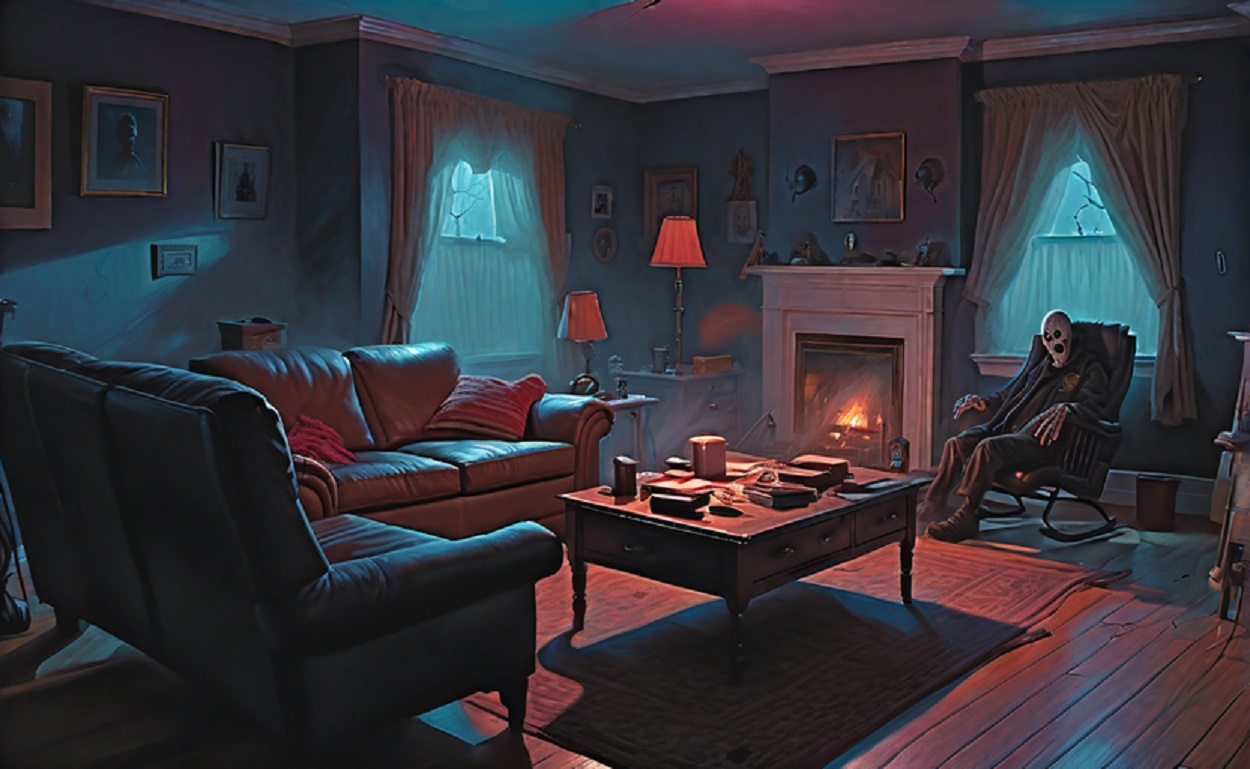
It is also worth examining the fact that many poltergeist cases revolve around young children and teenagers. And while it would appear that Eric was happy to speak with most people, and was most responsive to Mrs. Andrews, the activity appeared to have a slight focus on Theresa. That is not to say that Theresa or other youngsters involved in poltergeist cases are faking or a part of a hoax, but rather that some kind of energy from them is assisting in the manifestation of some kind of energy build-up. And while this energy is very real, it is, according to many poltergeist investigators, not connected to a once-living person, or even an entity, but rather the subconscious mind of the respective child, in this case, Theresa.
The Untapped Power Of The Mind?
Indeed, Colvin pointed to the fact that Eric could offer little details of his own past due to the fact that “he” was limited to the contents of Theresa’s subconscious mind. This fact also suggests that Theresa herself was almost certainly unaware of this fact, otherwise, we might expect her to invent a solid past and background for Eric (as has been noticed in other proven hoax cases).
Colvin referred to this as “suppressed tension” and offered that “a full psychological testing regime” might be the best path to finding if there is a connection between this tension and poltergeist activity. Indeed, if this was proven to be the case, not only would it explain the poltergeist phenomena (vindicating many who have claimed to have been caught up in such encounters) but would also pave the way to real possibilities of the power of the human mind.
This is perhaps also interesting with the suggestions of telepathy when Eric would answer questions that he himself had thought or when responded to questions before Mrs. Andrews had finished speaking. When Colvin reviewed the tape records of the numbered cards experiment, he was astonished to find that all of the answers were, in fact, correct and that the wrong responses had been incorrectly heard at the time. This was largely because Eric had responded before Mrs. Andrews had finished speaking and so the first knocks were missed. Of course, if Theresa had seen the cards, she could have ensured she responded accordingly. However, that would not explain how she had made the knocks in the first place.
As unique as the Andover Poltergeist case is, then, it is also a case that resonates with multiple others around the world and across the decades. This should alert us to the fact that whatever is behind these often-unsettling encounters, it is something very real if not yet understood. Indeed, we might find that the truth to these curious accounts is not of a paranormal nature (in terms of ghosts and ghouls) but of some kind of quantum physics nature, such things as the manifestation of energies and even of other dimensions.
The video below examines some of the most interesting poltergeist cases on record.
References
| ↑1 | The Andover Case: A Responsive Rapping Poltergeist, The Society for Psychical Research https://www.spr.ac.uk/andover-case-responsive-rapping-poltergeist |
|---|
Fact Checking/Disclaimer
The stories, accounts, and discussions in this article may go against currently accepted science and common beliefs. The details included in the article are based on the reports, accounts and documentation available as provided by witnesses and publications - sources/references are published above.
We do not aim to prove nor disprove any of the theories, cases, or reports. You should read this article with an open mind and come to a conclusion yourself. Our motto always is, "you make up your own mind". Read more about how we fact-check content here.
Copyright & Republishing Policy
The entire article and the contents within are published by, wholly-owned and copyright of UFO Insight. The author does not own the rights to this content.
You may republish short quotes from this article with a reference back to the original UFO Insight article here as the source. You may not republish the article in its entirety.
